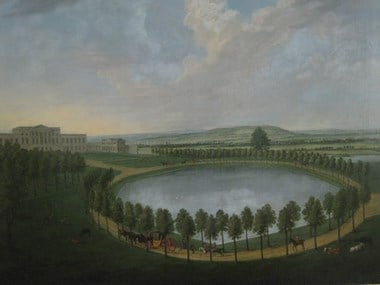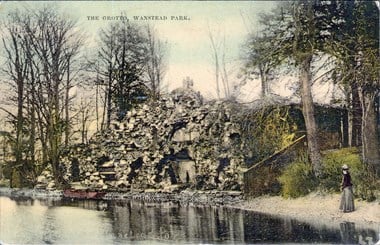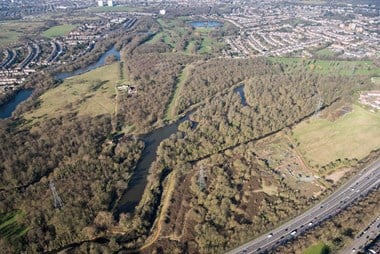Wanstead House
In about 1713, Sir Richard Child, heir to a mercantile fortune, commissioned Colen Campbell, to build Wanstead House, ‘one of the noblest houses, not only in England, but in Europe’. Campbell’s innovative classical façade was widely influential and sowed the seeds for English Palladianism. Its opulent interior by William Kent was equal to Kensington Palace and its extensive gardens were attributed to leading landscape designers George London and Humphry Repton.
Wanstead’s glory days came to an end in 1822, when a major sale of its contents was arranged to pay off financial debts. Two years later the house was demolished, its building fabric dispersed far and wide. A large crater on an east London golf course is all that remains of this once ‘princely mansion’.
Based on scholarly research, 'Wanstead House: East London’s Lost Palace' provides the first illustrated history of the lost Georgian estate, charting the meteoric rise and fall of the Child dynasty. By restoring Wanstead’s reputation amongst the leading houses of the era, this book demonstrates that those lost in actuality, should by no means be lost to history.
Key features
- The first illustrated study to be published on the history of Wanstead House and its landscape and re-establishes its position amongst the most significant estates of the Georgian period.
- Unseen images and archive material of the lost estate will, for the first time, recreate how this lost estate developed, appeared and was experienced throughout the eighteenth century.
- Presents the first in-depth study of Colen Campbell’s and William Kent’s designs for Wanstead House, which rank amongst their earliest and most influential works.
- Serves as a case study for the study of lost houses demolished prior to the introduction of photography.
- Contributes to the ongoing conservation and preservation of the historic site of Wanstead Parklands and ensures its protection for future generations to enjoy.
Contents
- Preface
- Acknowledgements
- Illustration Credits
- List of Illustrations
- List of Abbreviations
- Family tree
- Introduction: In search of East London’s Lost Palace
- Part One: Sir Josiah Child, ‘The Albion Croesus’, 1673-99
Chapter 1: Establishing a mercantile estate in the late 17th century - Part Two: Richard Child, Viscount Castlemaine and 1st Earl Tylney, 1704-50
Chapter 2: Setting the stage: Richard Child and ‘the noblest Gardens now in the Kingdom’, 1704-13
Chapter 3: Colen Campbell and the rebuilding of Wanstead House, 1713-17
Chapter 4: The Interiors of Wanstead House, 1720-50
Chapter 5: The Artinatural Landscape, 1725-50 - Part Three: John Child, 2nd Earl Tylney, 1750-85
Chapter 6: John Child and the late 18th-century landscape
Chapter 7: ‘A bird of passage’: John Child’s Italian sojourns - Part Four: Catherine Tylney Long (1805-25)
Chapter 8: ‘The richest heiress of the British Dominions’
Chapter 9: The Pole Tylney Long Wellesleys at Wanstead: A Regency revival (1812-22)
Chapter 10: The Great Sales of Wanstead House (1822-24)
Chapter 11: Return from exile
Chapter 12: Epilogue: tracing the lost relics of Wanstead House and its gardens - Appendix: locations of the contents and building fabric of Wanstead House
- References
- Index
Wanstead House
Please click on the gallery images to enlarge.
Additional Information
- Series: Architectural History
- Publication Status: Completed
- Pages: 208
- ISBN: 9781800856097 (Hardcover) | eISBN:9781802070781 (PDF)
Accessibility
If you require an alternative, accessible version of this document (for instance in audio, Braille or large print) please contact us:
Customer Service Department
Telephone: 0370 333 0607
Email: [email protected]









